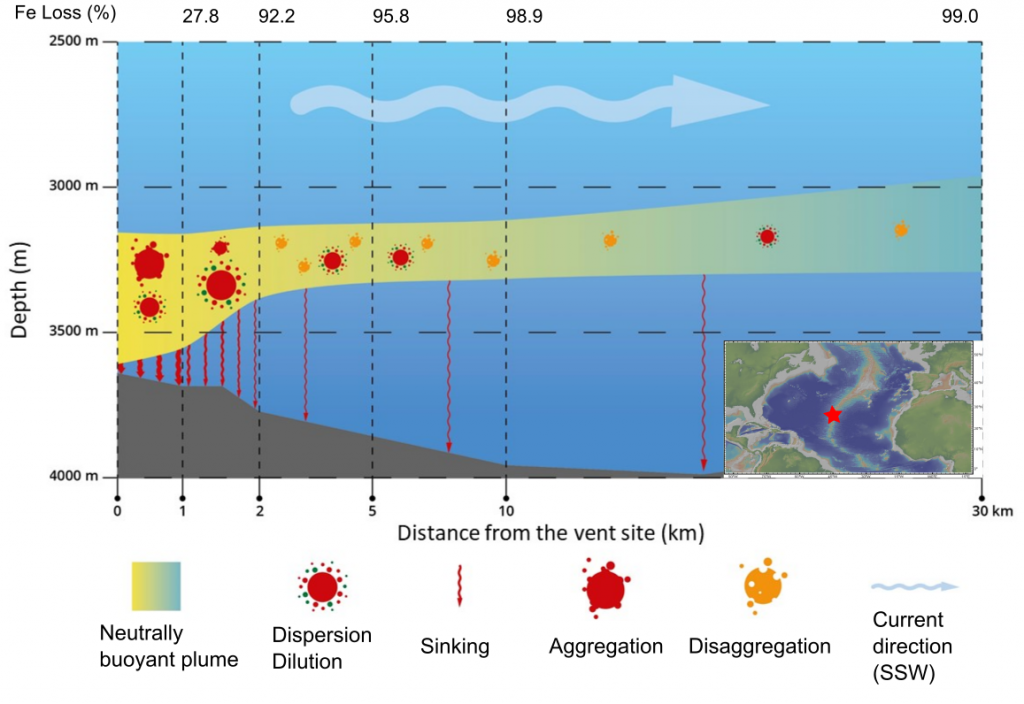Dissolved iron and manganese fates reveal processes along the hydrothermal TAG plume
González-Santana and co-workers (2020, see reference below) performed high-spatial resolution analyses of dissolved iron (Fe) and manganese (Mn) samples collected at nine stations during the GEOTRACES HERMINE GApr07 process study at the Mid Atlantic Ridge.
Using a 5 box model to interpret their data, they define the distance range where the main reversible exchange direction between the dissolved and the particulate phases starts taking place: while aggregation predominates in the first 2 km, disaggregation outweighs aggregation further away. In addition, they reveal that the Fe loss by sinking was due to particles with radii ranging from 1.9 to 19.6 µm, with decreasing sizes as the hydrothermal plume was transported away from the vent site. They also show that the hydrothermal dissolved Fe and dissolved Mn signal could still be seen 75 km from the TAG vent site, despite a fast decrease in the particulate content in the first 2 km.

Reference:
González-Santana, D., Planquette, H., Cheize, M., Whitby, H., Gourain, A., Holmes, T., Guyader, V., Cathalot, C., Pelleter, E., Fouquet, Y., Sarthou, G. (2020). Processes Driving Iron and Manganese Dispersal From the TAG Hydrothermal Plume (Mid-Atlantic Ridge): Results from a GEOTRACES Process Study. Frontiers in Marine Science, 7, 568. DOI: https://doi.org/10.3389/fmars.2020.00568
